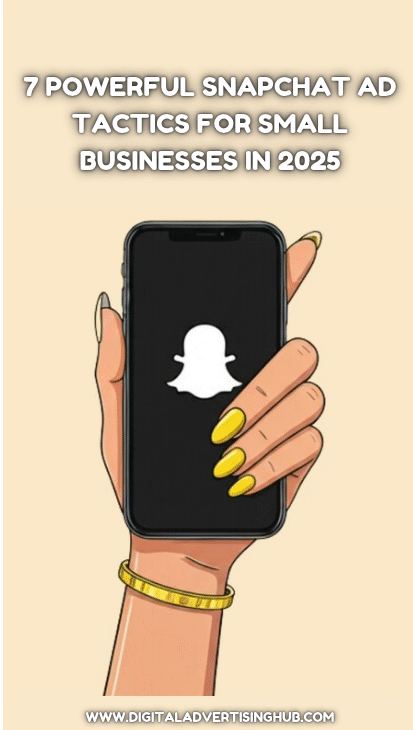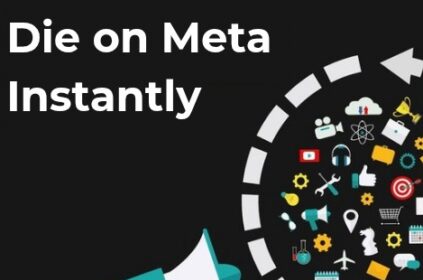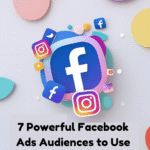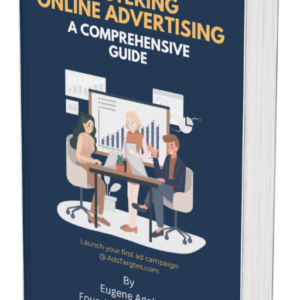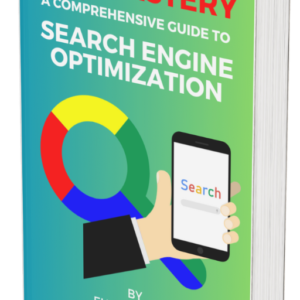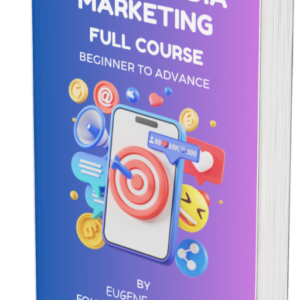Advertising platforms have shifted significantly in the past decade, but Snapchat remains one of the fastest-growing social networks for engaging younger audiences.
With over 422 million daily active users in 2025 according to Statista, small businesses now view Snapchat as more than just a social app.
It has become a full-fledged advertising channel offering a mix of immersive video formats, localized targeting, and measurable performance.
For small businesses, Snapchat’s ad products are particularly valuable because they allow for creativity without demanding a massive budget.
Compared to other platforms, Snapchat’s ads blend seamlessly into user experiences, delivering visibility in a way that doesn’t feel overly intrusive.
Yet, success requires clarity and understanding Snapchat Ad tactics actually drives performance.
#1. Leveraging AR Lenses and Filters for Engagement
One of Snapchat’s signature features is its augmented reality (AR) capabilities.
AR lenses and branded filters let small businesses create interactive experiences where users can virtually “try on” a product, engage with playful branding, or participate in a campaign challenge.
These experiences are more than a gimmick—they drive real customer interaction.
Snapchat reports that over 250 million people engage with AR experiences daily.
For small businesses, that opens the door to memorable brand exposure that sticks with potential customers long after the ad impression.
Unlike static ads, AR encourages repeat engagement and sharing, multiplying organic reach.
To implement this effectively, focus on relevance.
A coffee shop could design a filter where users see a steaming cup appear in their hand, while a fashion retailer could create a lens that lets customers preview clothing accessories.
These Snapchat Ad tactics are powerful because they connect directly to product experience while enhancing user fun.
Budget efficiency also matters here. Thanks to simplified tools in the Snap Lens Studio, businesses no longer need a developer team to create these AR assets.
With a modest investment, even local brands can deliver campaigns that look polished and professional.
Small businesses that consistently deploy AR filters also benefit from earned media when users share branded content with friends.
In short, using AR as part of Snapchat Ad tactics allows small businesses to go beyond awareness campaigns.
It fosters product trial, interaction, and recall—all vital to driving conversions in 2025.
#2. Using Location-Based Targeting to Capture Local Buyers
For small businesses, the most valuable audience is often the one closest to their storefront.
Snapchat’s location-based targeting helps bridge the digital-to-physical gap by allowing ads to appear to users within defined geographic boundaries.
These can be as broad as an entire city or as specific as a few city blocks.
Geo-fenced ads are especially useful for restaurants, retail shops, gyms, or service providers that depend heavily on foot traffic.
For example, a pizza shop could run ads during evening hours within a three-mile radius, offering a limited-time discount code.
A boutique could showcase new arrivals only to users walking near its district.
According to Snapchat Business, location-based ads deliver higher relevance, resulting in better click-through and conversion rates.
For small businesses, this means marketing budgets stretch further, with dollars reaching the highest-intent customers.
What makes this one of the most practical Snapchat Ad tactics in 2025 is its integration with Snap Map.
Businesses can appear organically when users explore nearby places, further boosting visibility.
Combining paid ads with organic discovery helps reinforce presence in the minds of local consumers.
Another advantage is seasonal adaptation. During holidays or local events, businesses can create time-sensitive promotions, ensuring their ads ride on the natural wave of increased local spending.
This context-driven approach maximizes resonance, making it one of the most reliable methods for driving real-world sales.
#3. Prioritizing Vertical Video for Higher Completion Rates
Snapchat is a vertical-first platform. Users consume content in portrait orientation, and ads that fail to adapt suffer from low engagement.
Vertical video, optimized to fill the entire mobile screen, consistently earns higher completion rates and greater user attention compared to repurposed horizontal content.
In 2025, small businesses must prioritize mobile-native video to succeed on Snapchat.
A vertical ad ensures no wasted space, better storytelling flow, and more immersive experiences.
Research from WARC shows vertical ads are 3x more effective at holding attention than horizontal formats on mobile.
The ideal length is short and focused—between 6 to 10 seconds—enough to capture interest without overwhelming.
For example, a local bakery can showcase the process of frosting cupcakes in a snappy, visually engaging clip.
A fitness trainer might highlight a single exercise that ties back to their personal training offer.
Snapchat Ad tactics built around vertical video don’t just perform better—they often cost less in practice.
Platforms reward ads that match user behavior with better delivery, lowering cost-per-view and improving return on ad spend.
Small businesses should also consider adding captions or text overlays to reinforce messaging, as many users watch without sound.
This ensures value delivery even in muted scenarios.
By mastering vertical storytelling, businesses tap into the natural rhythm of the platform, making their ads more likely to convert.
#4. Harnessing Story Ads for Narrative-Driven Marketing
Snapchat’s Story Ads let businesses place branded tiles within the Discover section, leading users into a curated sequence of short videos or images.
Unlike single ads, Story Ads deliver a multi-part experience, which is particularly powerful for brands with layered stories or multiple offerings.
For small businesses, Story Ads provide space to highlight different aspects of their brand.
A local spa could dedicate one slide to relaxation treatments, another to skincare products, and another to special seasonal offers.
Each piece contributes to a larger narrative that builds trust and context.
This format is also measurable. Businesses can track metrics like swipe-ups, completions, and shares to gauge whether the story resonates.
According to eMarketer, narrative-driven ads improve brand recall by up to 68% compared to static formats.
What makes Story Ads one of the most effective Snapchat Ad tactics is their versatility. They can work for top-of-funnel brand awareness or bottom-of-funnel promotions.
By crafting a mini-journey, small businesses guide users from curiosity to conversion in just a few swipes.
In 2025, attention spans are shorter, but demand for authenticity is higher. Story Ads offer the perfect middle ground—snackable, yet meaningful.
For businesses with limited budgets, the ability to run multiple creatives within one campaign boosts efficiency without sacrificing depth.
#5. Optimizing for Conversion with Snap Pixel and Advanced Tracking
Every advertising strategy requires strong measurement. Without data, small businesses risk spending blindly.
Snapchat’s Snap Pixel is a game-changer here. By placing a pixel on their website, businesses can track user actions—from page visits to purchases—directly tied to their Snapchat campaigns.
This enables retargeting, where businesses serve ads to users who have already interacted with them.
A user who viewed a product but didn’t buy can later be shown a discount ad, nudging them toward conversion.
These remarketing efforts dramatically improve ROI, making this one of the must-have Snapchat Ad tactics in 2025.
Advanced tracking also empowers lookalike audiences. By analyzing existing customers, businesses can target similar users more likely to convert.
For example, studies show that retargeted ads are 76% more likely to earn clicks than first-exposure ads.
Small businesses should not underestimate the power of automated tracking. Instead of guessing, they can now allocate budgets toward the audiences that drive measurable revenue.
This builds confidence in Snapchat as a sustainable channel rather than a one-off experiment.
Additionally, Snap’s partnership with third-party analytics tools enables deeper insight.
By syncing campaign data with Google Analytics or CRM systems, small businesses get a clearer view of lifetime value, payback periods, and customer journeys.
This level of precision ensures every dollar spent delivers tangible business outcomes.
#6. Driving Direct Sales Through Collection Ads and In-App Shopping
In 2025, the social commerce wave continues to accelerate.
Snapchat’s Collection Ads allow small businesses to showcase multiple products within one ad, letting users browse and purchase without leaving the app.
This reduces friction and boosts purchase likelihood.
For example, a boutique could run a Collection Ad highlighting new arrivals, with each tile linking to a checkout page.
A restaurant could showcase multiple meal deals, each with direct ordering options. This creates a storefront experience embedded within a single swipe.
According to Insider Intelligence, social commerce sales in the U.S. are projected to surpass $80 billion in 2025, with platforms like Snapchat playing a central role.
For small businesses, adopting in-app shopping is no longer optional—it’s a competitive necessity.
What makes Collection Ads essential Snapchat Ad tactics is their role in closing the loop between discovery and purchase.
Instead of driving traffic elsewhere, businesses keep the entire funnel within the Snapchat environment, reducing drop-offs.
In-app shopping also aligns with consumer preferences. Younger audiences are accustomed to instant gratification.
By letting them buy directly after engaging with an ad, small businesses meet expectations while securing faster sales.
#7. Maximizing ROI with Automated Campaign Optimization
Finally, Snapchat offers automated tools that simplify ad management for smaller teams.
With goal-based bidding, businesses can set objectives—like app installs, conversions, or purchases—and let Snapchat optimize delivery.
This removes guesswork from manual bidding strategies.
Automation is particularly useful for small businesses with limited time.
Instead of micromanaging every campaign, they can rely on Snapchat’s machine learning to test creative variations, audience segments, and placements.
Reports from Adweek suggest that advertisers using automation tools see up to 30% lower acquisition costs.
One of the most effective Snapchat Ad tactics in 2025 is combining automation with strong creative.
Machines optimize reach, but creativity drives results. By testing multiple video cuts, captions, and calls-to-action, businesses allow algorithms to identify winning combinations at scale.
For small businesses, this balance delivers the best of both worlds—efficiency and effectiveness.
With campaigns running on autopilot, owners can focus on other areas like customer service or product development, while still reaping advertising benefits.
Building Creative Consistency Across Campaigns
Small businesses often focus on launching isolated ads, but long-term impact depends on consistency.
When audiences see cohesive colors, brand voice, and style repeated across multiple placements, recognition improves.
Snapchat Ad tactics that emphasize creative alignment give campaigns staying power beyond a single promotion.
For example, if a bakery uses pastel tones and playful typography in its vertical videos, the same identity should appear in AR filters and Story Ads.
This consistency helps users instantly connect content to the brand, even without reading the logo.
Consistency also aids in measuring effectiveness. If different creative styles are scattered across campaigns, it becomes difficult to pinpoint what resonates.
With unified design, performance data is more reliable, allowing small businesses to refine campaigns with confidence.
In 2025, where customers scroll past countless ads daily, familiarity builds trust. Repetition across Snapchat formats strengthens recall and reduces the cost of winning attention over time.
For a small business, investing in creative discipline is just as important as targeting or bidding strategies.
It ensures every impression contributes to a recognizable, trustworthy presence on the platform.
Understanding Audience Behavior Through Snapchat Insights
While creativity drives engagement, data reveals the deeper story. Snapchat’s built-in analytics tools provide detailed insights into how users interact with ads.
Small businesses can see swipe-ups, conversions, time spent on creative, and demographics of engaged users.
These insights are vital for refining Snapchat Ad tactics because they show exactly which campaigns earn attention and which fall flat.
For example, a local clothing boutique might discover that their ads perform best with women aged 18–24 in urban areas, while men in the same bracket engage less.
With this knowledge, they can double down on the stronger demographic, improving ROI without increasing spend.
Snapchat Insights also highlights when audiences are most active, enabling smarter scheduling of campaigns for peak impact.
Understanding behavior isn’t just about optimizing current ads—it shapes future strategy.
By identifying patterns in creative formats or messaging, small businesses can gradually build a data-backed playbook that improves results with each campaign.
In 2025, where ad budgets are tight and competition fierce, decisions grounded in data offer the clearest path to sustainable growth.
Using Snapchat’s analytics as more than a reporting tool transforms it into a roadmap for lasting advertising success.
Aligning Snapchat Ads With Broader Marketing Goals
One mistake many small businesses make is treating Snapchat advertising as a standalone effort.
True impact comes when Snapchat Ad tactics are aligned with broader marketing objectives.
If the company’s main goal is boosting in-store sales, then location-based targeting or discount codes within ads should directly connect to foot traffic campaigns.
If the priority is growing e-commerce, then Collection Ads and Snap Pixel retargeting should sync with the website funnel.
This alignment ensures resources aren’t scattered across disconnected campaigns. Instead, Snapchat becomes an integrated piece of a larger growth engine.
For example, a fitness studio could run vertical video ads on Snapchat highlighting a special membership deal, while simultaneously promoting the same offer in email and Instagram campaigns.
When customers encounter the message across multiple touchpoints, trust builds faster, and conversions rise.
In 2025, marketing silos no longer work. Customers expect seamless journeys where every channel reinforces the same message.
Small businesses that weave Snapchat ads into this journey gain more than impressions—they gain measurable results tied directly to their top goals.
Integration transforms Snapchat from a “nice-to-have” experiment into a reliable driver of business performance.
Conclusion
Snapchat in 2025 is no longer just an app for casual sharing—it is a full-fledged advertising ecosystem.
For small businesses, the opportunity lies in adopting proven Snapchat Ad tactics that balance creativity, targeting precision, and conversion-driven approaches.
From interactive AR filters to advanced tracking with Snap Pixel, the platform offers tools tailored to budgets of all sizes.
By embracing vertical video, story-driven campaigns, and in-app commerce, businesses not only reach audiences but also move them efficiently through the funnel.
Most importantly, Snapchat levels the playing field.
With thoughtful execution, even the smallest local business can compete against larger brands by tapping into cultural relevance and technological innovation.
Those who adapt to these seven tactics position themselves for sustainable growth in the evolving digital economy of 2025.

